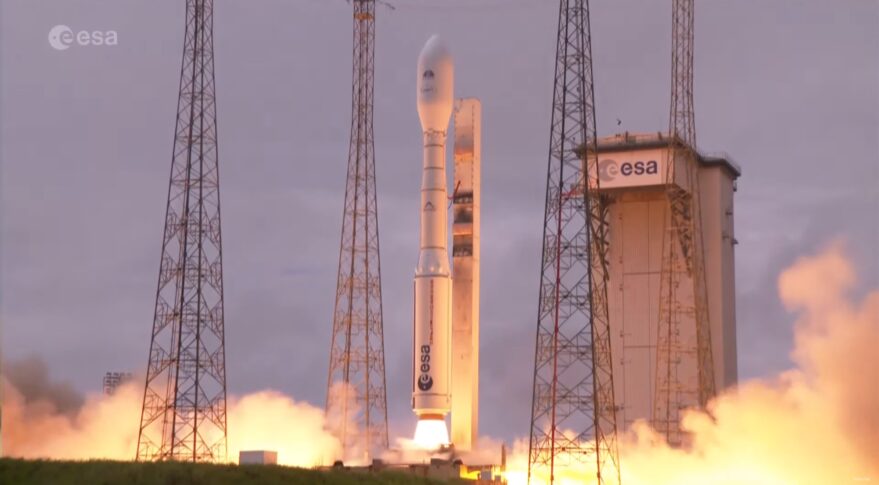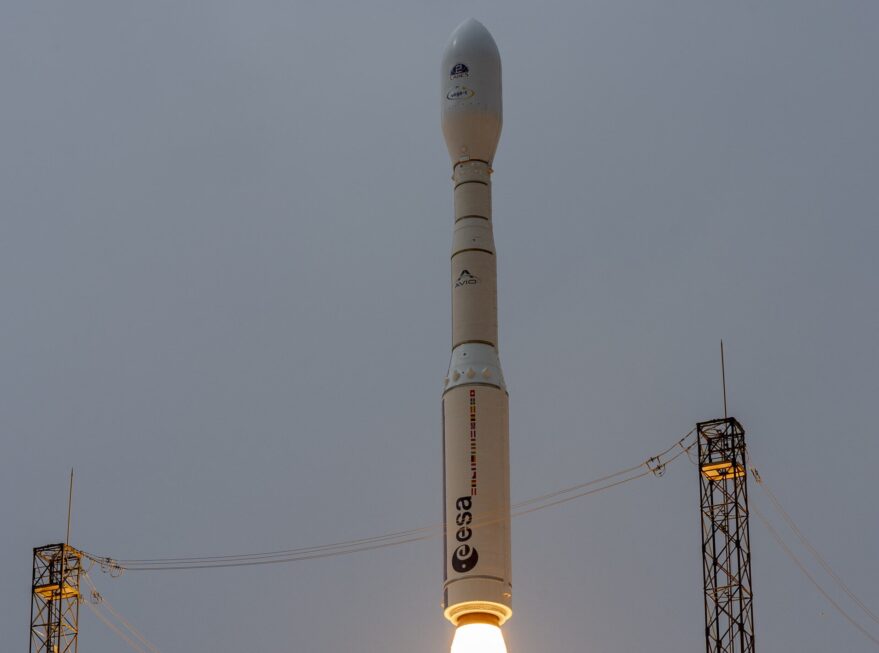
Vega C lifts off on maiden flight (Image Credit: Space News)
TAMPA, Fla. — Europe’s new Vega C medium-lift rocket lifted off on its maiden flight July 13, carrying an Italian physics satellite and six cubesats.
The four-stage rocket launched from Kourou, French Guiana, at 9:13 a.m. Eastern at the end of a two-hour launch window. Technical issues had twice halted the countdown sequence.
Italy’s 295-kilogram Laser Relativity Satellite-2, or LARES-2, is the primary payload and was placed in an unusual inclined orbit at 5,893 kilometers to test Einstein’s theory of General Relativity.
LARES-2 was deployed nearly 85 minutes after lift-off, followed by six cubesats about 45 minutes later.
Three of the cubesats are also from Italy: AstroBio which will test a solution for detecting biomolecules in space, Greencube with an experiment for growing plants in microgravity and ALPHA, which aims to demonstrate technology for understanding the Earth’s magnetosphere.
Joining them were MTCube-2 and Celesta from France and Trisat-R from Slovenia which will study the effects of radiation on electronic systems.
Arianespace conducted the launch and declared the mission a success in a press release following a flight that lasted about two hours and 15 minutes.
“With this inaugural launch officially declared a success, Arianespace will now commence Vega C operations, a key milestone for European sovereign access to space,” said Arianespace CEO Stéphane Israël.
The first commercial launch of Vega C is scheduled for November, when the rocket is slated to place the Pléiades Neo 5 and 6 Earth-imaging satellites for their builder and operator Airbus.

Vega C has more powerful rocket motors and a larger payload volume than Vega, which is retiring after first launching a decade ago.
The upgraded rocket can carry about 2.3 metric tons to a reference 700-kilometer altitude polar orbit, according to the European Space Agency, compared with 1.5 metric tons for its predecessor.
Vega C’s first stage is powered by a P120 engine that will also be used by Europe’s upcoming Ariane 6 launcher, which has two variants for replacing Europe’s heavy-lift Ariane 5 and the medium-lift Soyuz rocket that was sourced from Russia.
ESA said July 12 that the Ariane 6 central core, comprising its core stage and upper stage, had been transferred to a launchpad in Kourou for combined tests ahead of a maiden launch next year.
The central core is joined by three pylons shaped like the rocket’s solid boosters, and an inert mockup of the fourth booster, for tests that include filling tanks and an automated countdown sequence.
This article was updated July 13 after the final payload on Vega C’s maiden flight separated from the rocket.








